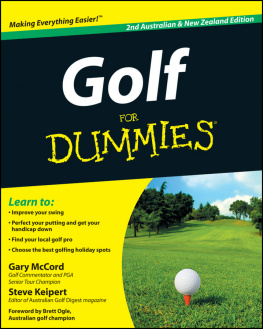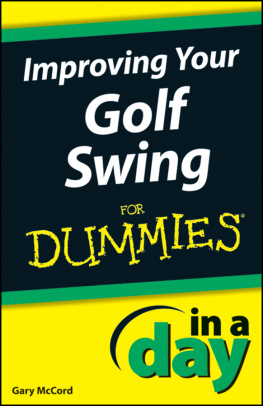Copyright 2010 by Adrian Winter
Cover and internal design 2010 by Sourcebooks, Inc.
Cover design by Cyanotype Book Architects
Cover image janmleung/iStockphoto.com
Sourcebooks and the colophon are registered trademarks of Sourcebooks, Inc.
All rights reserved. No part of this book may be reproduced in any form or by any electronic or mechanical means including information storage and retrieval systemsexcept in the case of brief quotations embodied in critical articles or reviewswithout permission in writing from its publisher, Sourcebooks, Inc.
This publication is designed to provide accurate and authoritative information in regard to the subject matter covered. It is sold with the understanding that the publisher is not engaged in rendering legal, accounting, or other professional service. If legal advice or other expert assistance is required, the services of a competent professional person should be sought.From a Declaration of Principles Jointly Adopted by a Committee of the American Bar Association and a Committee of Publishers and Associations
Published by Sourcebooks, Inc.
P.O. Box 4410, Naperville, Illinois 60567-4410
(630) 961-3900
Fax: (630) 961-2168
www.sourcebooks.com
Library of Congress Cataloging-in-Publication Data is on file with the publisher.
Printed and bound in the United States of America.
SB 10 9 8 7 6 5 4 3 2 1
FOREWORD
I started playing golf when I turned six years old. My dad took an old putter down from our loft and gave it to me for my birthday along with a set of old balls. I remember vividly the excitement of unwrapping the present and the realization that I had my very own golf club.
Around that time we paid regular visits to my grandparents house for family gatherings, and in an attempt to keep me amused, the putter was often packed in the car. At one such get-together, I remember my aunt enticing me into the hallway with a $1 bill. She laid it down on the carpet and told me I could keep it if I was able to putt a ball from one end of the hall to the other and make it come to rest on the bill. Feeling safe in the knowledge that not only would I be kept quiet for hours but also that her money was safe, she left me to it.
I remember trying over and over again. Gradually I got used to the weight of the putt and my line became more consistent, but even when both looked to be perfect, the ball would either finish just short or trickle tantalizingly past the money. Time and time again I would get agonizingly close only to watch as the ball missed landing on the bill by a fraction.
By this point, I remember, various members of my family had come to the hallway to see how I was faring. While they stood watching me as I continued to try to claim my prize, it finally happened. I sent the ball rolling toward the target, and just as it looked to be stopping short, it caught the front of the bill and found just enough momentum to trickle on. Id done itand with everyone watching!
I look back on that day as the moment my love of golf started, and even now, nearly thirty years later, it hasnt diminished. I still regularly practice my putting with games I have invented (many of which appear in this book), and I consider putting to be the strongest part of my golf game. I hope you not only have a lot of fun with this book, but soon consider putting the strongest part of your game as well.
Adrian Winter
INTRODUCTION
I dont fear death, but I sure dont like those three-footers for par.
Chi Chi Rodriguez
I enjoy the oohs and aahs from the gallery when I hit my drives. But Im getting pretty tired of the awws and uhhs when I miss the putt.
John Daly
Putts are the most common shot in golf. They make up around 40 percent of all strokes in a round, so its no surprise that improving your putting is one of the biggest keys to lowering your golf score. While it may not be possible to sink every putt every timeeven professional golfers miss around half their putts from 6 feet awaythe good news is there is an easy way for all of us to improve. That way, quite simply, is to practice, and this book will help you do just that.
The Little Book of Indoor Golf Games contains 18 holes of fun and increasingly challenging games that are specifically designed to improve your putting in the comfort of your home or office. In contrast to the traditional methods of repetitive drills or hitting into a ball-returning machine, this book introduces different and exciting ways to practice through games. Whether youre a single-figure handicapper or picking up a putter for the first time, playing and practicing the games in this book will improve your putting in a fun but purposeful way.
The games are designed to develop the two key elements of putting; line (direction) and length (speed). To improve the line of your putts, targets in the games are often set at a gap of 4 inchesthe diameter of a golf hole. Sometimes, to sharpen your accuracy, you are required to aim at just one single tee. To work on your length, some games require you to place a line of string (which you must avoid putting over) 2 feet behind the target area. This helps you develop the important habit of putting at a speed that would take the ball beyond the hole but stop soon after it. Its very important not to putt too far past the hole because, as research by putting guru Dave Pelz shows, professional golfers rarely miss a putt from 2 feet but miss up to 15 percent of those tricky 3-footers. Pelz also says that an ideal putt should have enough speed to finish 17 inches past the hole. This gives the ball the best chance to hold its line and still drop into the hole.
The section in the book called 12 Simple Steps to Becoming a Better Putter can be used to develop a sound technique and help you address any bad habits. As your skill improves, refer to the sections called Want a Challenge? that offer tips on how to steadily increase the level of difficulty of each game. In addition, all suggested measurements in the book are flexible so you can gradually vary them to make each game a suitable test of your own ability.
The 18 games are suitable for all ages and require little more than basic golfing equipmenta putter, balls, and some tees. You dont need a large area in your home to play since each game can be adapted to fit whatever size space you have. Although designed for playing indoors on a carpet, there is no reason why the games cant be played outside too, perhaps in a backyard or on a practice putting green.
This book is designed for one, two, or more players making it suitable for you to play either on your own or with family and friends. If youre interested in a bit of friendly competition, play the Indoor Open Championshipa round of all 18 holesand see who the overall champion is. A section at the back of this book explains how to play and keep score.
I wish you many hours of enjoyment as you play your way through the games. By practicing your putting indoors, youll soon see the results outside on the golf course. Finally, remember to keep track of your progress and always keep aiming to improve. As golf legend Ben Sayers once said, A good player who is a great putter is a match for any golfer. A great hitter who cannot putt is a match for no one.
12 SIMPLE STEPS TO BECOMING A BETTER PUTTER
There is no one correct way to putt, and even the professionals have different putting styles and techniques. However, having a firm grasp on these basics will go a long way toward helping you improve your putting.
|
 | Line it up and imagine the putt-Before you play the shot, try standing behind the ball, keeping it in line with the hole. Study the path you want the ball to take, and picture exactly how you want the putt to go. |
Next page












